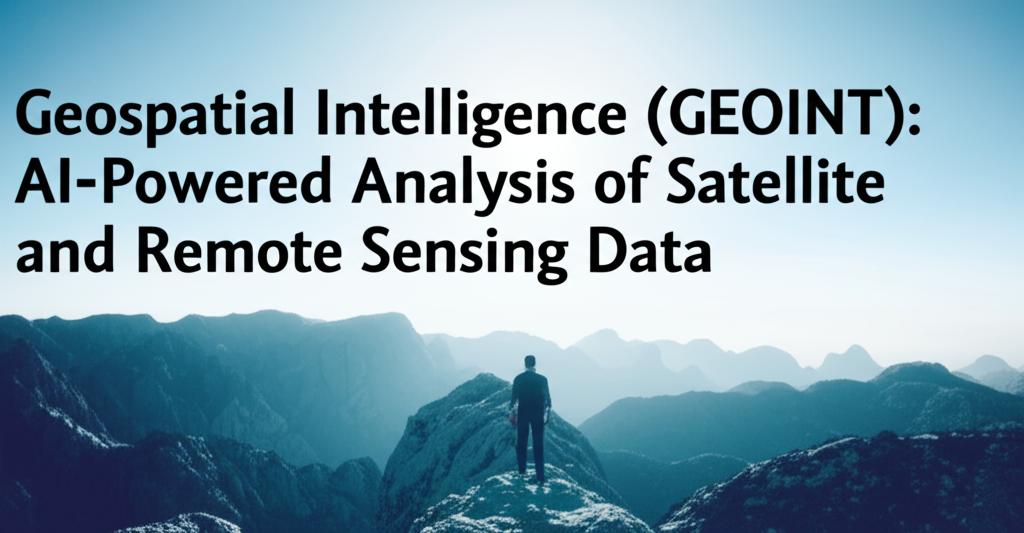Artificial Intelligence (AI) is revolutionizing Geospatial Intelligence (GEOINT), transforming how we analyze vast amounts of satellite and remote sensing data. By leveraging machine learning (ML) algorithms, particularly deep learning, AI significantly enhances the speed, accuracy, and scale of GEOINT tasks.
The Role of AI in GEOINTTraditionally, analyzing satellite imagery and remote sensing data was a manual, time-consuming process requiring significant human expertise. AI automates and accelerates this process. AI algorithms can sift through petabytes of data captured by satellites, drones, and other sensors, identifying patterns, objects, and changes that might be missed by human analysts. This includes tasks like object detection (identifying vehicles, buildings, or infrastructure), change detection (monitoring deforestation, urban sprawl, or damage assessment after natural disasters), and land cover classification.
Key AI Techniques- Computer Vision: This field of AI enables machines to "see" and interpret images. Deep learning models, especially Convolutional Neural Networks (CNNs), are widely used for classifying imagery, detecting objects, and segmenting features within satellite and aerial photos.
- Machine Learning: Beyond image analysis, ML models can integrate various geospatial data types (like Lidar, Radar, and multispectral imagery) to predict trends, model environmental changes, or assess risks.
- Natural Language Processing (NLP): NLP can be used to analyze textual data associated with geospatial locations, such as social media feeds or news reports, adding another layer of context to GEOINT analysis.
- Predictive Analytics: AI models can forecast future events based on historical geospatial data, such as predicting crop yields, potential landslide areas, or migration patterns.
- Speed and Efficiency: AI drastically reduces the time needed to process and analyze large datasets, enabling near real-time insights.
- Accuracy and Consistency: AI models can perform analysis tasks with high accuracy and consistency, reducing human error and bias.
- Scalability: AI systems can handle massive volumes of data that would be overwhelming for human analysts alone.
- Enhanced Capabilities: AI enables new types of analysis, such as detecting subtle changes over time or identifying complex patterns across different data sources.
- Improved Decision-Making: Faster, more accurate insights support better decision-making in various sectors, including defense, disaster response, urban planning, agriculture, and environmental monitoring.
AI-powered GEOINT has diverse applications:
- Defense and Security: Monitoring activities, tracking assets, identifying threats, and surveillance.
- Disaster Management: Rapid damage assessment after earthquakes, floods, or wildfires; identifying safe evacuation routes.
- Environmental Monitoring: Tracking deforestation, monitoring ice caps, assessing water quality, and identifying pollution sources.
- Agriculture: Precision farming, monitoring crop health, predicting yields, and managing resources.
- Urban Planning: Monitoring urban growth, managing infrastructure, and optimizing transportation networks.
- Resource Management: Identifying potential locations for natural resources like minerals or water.
Despite the advancements, challenges remain. These include the need for large, high-quality labeled datasets for training AI models, the computational resources required, ensuring the ethical use of AI in surveillance, and developing AI that can reason and explain its findings (explainable AI or XAI).
The future of GEOINT lies in increasingly sophisticated AI integration. We can expect advancements in unsupervised learning (reducing reliance on labeled data), edge computing (processing data directly on satellites or drones), AI-driven sensor tasking, and the fusion of GEOINT with other data sources for more comprehensive understanding. The synergy between AI and advanced remote sensing technologies will continue to unlock unprecedented insights about our planet.

